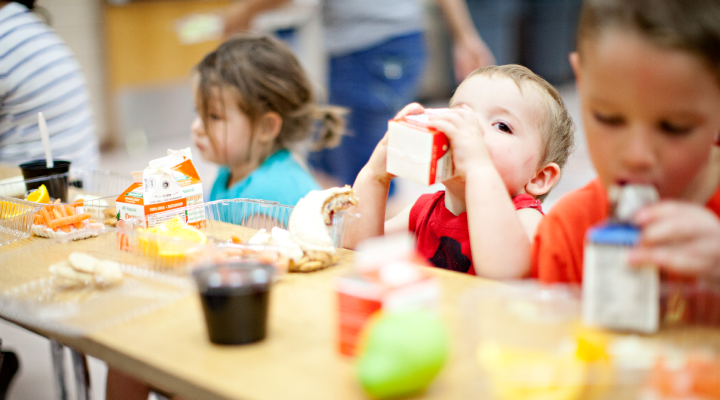
From vending machines to healthy cafeteria food, school nutrition is a hot topic. And it should be—children consume approximately 50% of their calories for the day while at school. And for kids from low-income families, it may be their only meal of the day.
Research about food served in schools tends to focus on nutritional value and its relationship to obesity. Though those issues are important, tooth decay is the most common chronic condition among kids. So how does food served in school settings affect oral health? Learn what the latest research is telling us, as well as what’s being done in schools across the country:
Environment is Essential
You don’t stop for donuts on your way to the office, but if there’s a big box in the break room, you’re more tempted to ditch your Greek yogurt for some glazed goodness. The same scenario holds true in the cafeteria. When kids are presented healthier options, they’ll consume healthier foods.
This idea extends to oral health. Surprisingly, programs promoting healthy eating may have a more positive effect on kids’ dental health than oral health programs. Oral health education programs are significant, but the food choices presented are more likely to impact the prevalence of cavities in kids.
The Cavity Culprit
The cause of cavities is largely dependent on diet. Simple carbohydrates and sugar-fueled foods can increase the risk of tooth decay. So even if your kids are brushing twice a day, the food they eat can still cause cavities.
School Superheroes
Policymakers have been hungry for change. Thanks to 2010’s Healthy, Hunger-Free Act, sugar and salt have been replaced by low fat and lean. The act limits unhealthy foods served in schools, while increasing access to fresh fruits and vegetables. And in 2014, junk food snacks were officially sacked from school vending machines.
In addition to a healthy smile, proper nutrition can make a positive impact on concentration and energy levels. Learn how to pack healthier lunches for your little ones.

